Layout
Table of Contents
- Limits
- Size Elements
- Stretch Elements
- Scale Element
- Align Elements
- Margin Elements
- Floating Element
- Tiles and Grids
- Horizontal Grids
- Horizontal Tiles
- Vertical Grids
- Vertical Tiles
- Layers
- Decks
- Flow Element
The Elements Library provides a comprehensive set of elements for laying out elements in the view.
Limits
Each element provides information on how it wants to be sized by means of
min and max limits: a hint that determine its actual extent and how it
will be placed in the view depending on available window space. The element’s
limits member function determines the minimum and maximum extents of an
element:
view_limits limits(basic_context const& ctx) const;
See Context for information about basic_context. view_limits
is a struct that gives us the min and max information:
struct view_limits
{
point min = { 0.0, 0.0 };
point max = { full_extent, full_extent };
};
For the purpose of this document, we will use these terms and expressions:
- limits
- The limits of an element
- limits.min
- The minimum limits of an element
- limits.min.x
- The minimum horizontal limit of an element
- limits.min.y
- The minimum vertical limit of an element
- limits.max
- The maximum limits of an element
- limits.max.x
- The maximum horizontal limit of an element
- limits.max.y
- The maximum vertical limit of an element
- horizontal limits
- (limits.min.x, limits.max.x)
- vertical limits
- (limits.min.y, limits.max.y)
- minimum limits
- (limits.min.x, limits.min.y)
- maximum limits
- (limits.max.x, limits.max.y)
- minimum horizontal limit
- limits.min.x
- maximum horizontal limit
- limits.max.x
- minimum vertical limit
- limits.min.y
- maximum vertical limit
- limits.max.y
By default, an element has full limits: it is infinitely resizable:
constexpr view_limits full_limits = {
{ 0.0, 0.0 }
, { full_extent, full_extent }
};
An element with full_limits can be resized from an empty point (zero x and
y size) up to the full extent of the screen, and beyond (if possible).

full_extentis actually an implementation defined huge number near the maximum limits of the coordinate’s data type (also implementation defined).
-
An element has a fixed horizontal size if this expression is true:
limits.min.x == limits.max.x. -
An element has a fixed vertical size if this expression is true:
limits.min.y == limits.max.y.
Examples
{ { 100, 100 }, { 100, 100 } }; // Fixed size
{ { 100, 100 }, { 100, full_extent } }; // Fixed width, flexible height
{ { 100, 100 }, { 100, 200 } }; // Fixed width, semi-flexible height (100 to 200)
Size Elements
Size elements override the limits of an enclosed element. There is a comprehensive list of size related elements in the Elements Library that can be used for various purposes. This section catalogues all the available size elements.
limit

Overrides the limits of an element.
Expression
limit(limits, subject)
Notation
limits |
Instance of view_limits
|
subject |
Instance of Element
|
Semantics
- The limits of
subjectwill be set to the specifiedlimitsconstrained by the natural limits of thesubject(the natural limits of the element will not be violated). - Returns instance of
Proxy.
fixed_size

Fixes the size of an enclosed element (subject).
Expression
fixed_size({ width, height }, subject)
Notation
width, height
|
float |
subject |
Instance of Element
|
Semantics
-
subjectwill be laid out with a fixedwidthandheight, constrained by the natural limits of thesubject(the natural limits of the element will not be violated). - Returns instance of
Proxy.
hsize
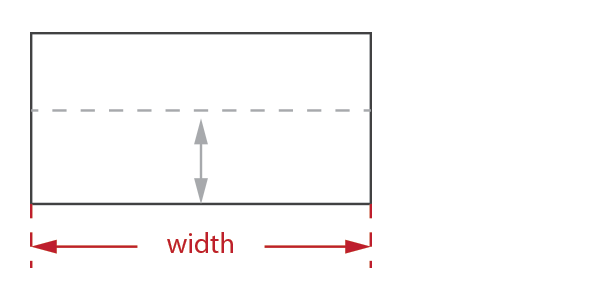
Fixes the horizontal size of an enclosed element (subject).
Expression
hsize(width, subject)
Notation
width |
float |
subject |
Instance of Element
|
Semantics
-
subjectwill be laid out with a fixedwidth, constrained by the natural horizontal limits of thesubject(the natural horizontal limits of the element will not be violated). - The natural vertical limits of
subjectwill not be affected. - Returns instance of
Proxy.
vsize
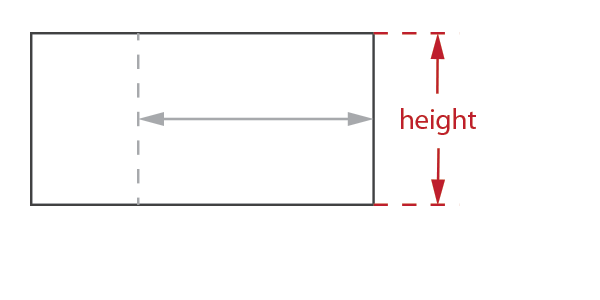
Fixes the vertical limits of an enclosed element (subject).
Expression
vsize(height, subject)
Notation
height |
float |
subject |
Instance of Element
|
Semantics
-
subjectwill be laid out with a fixedheight, constrained by the natural vertical limits of thesubject(the natural vertical limits of the element will not be violated). - The natural horizontal limits of
subjectwill not be affected. - Returns instance of
Proxy.
min_size
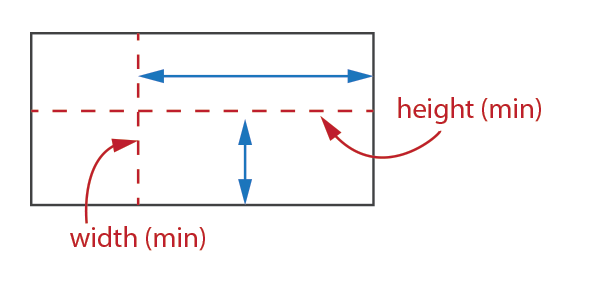
Overrides the minimum limits of an enclosed element (subject).
Expression
min_size({ width, height }, subject)
Notation
width, height
|
float |
subject |
Instance of Element
|
Semantics
- The minimum limits of
subjectwill be set to the specifiedwidthandheight, constrained by the natural minimum limits of thesubject. - the natural minimum limits of the element will not be violated.
- Returns instance of
Proxy.
hmin_size
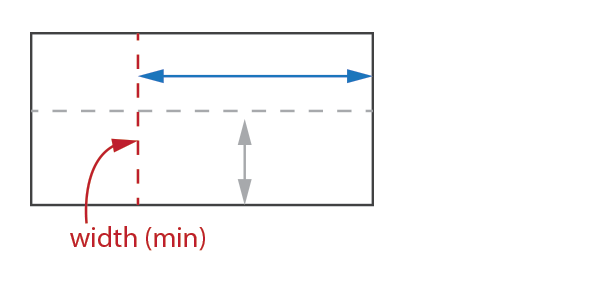
Overrides the minimum horizontal limit of an enclosed element (subject).
Expression
hmin_size(width, subject)
Notation
width |
float |
subject |
Instance of Element
|
Semantics
- The minimum horizontal limit of
subjectwill be set to the specifiedwidthconstrained by the natural horizontal minimum limits of thesubject. - The natural horizontal minimum limits of the element will not be violated.
- Returns instance of
Proxy.
vmin_size

Overrides the minimum vertical limit of an enclosed element (subject).
Expression
vmin_size(height, subject)
Notation
height |
float |
subject |
Instance of Element
|
Semantics
- The minimum vertical limit of
subjectwill be set to the specifiedheightconstrained by the natural vertical minimum limits of thesubject. - The natural vertical minimum limits of the element will not be violated.
- Returns instance of
Proxy.
max_size
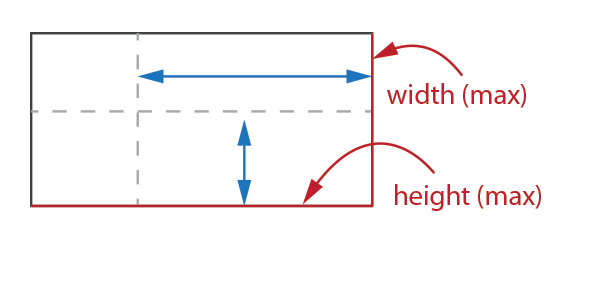
Overrides the maximum limits of an enclosed element (subject).
Expression
max_size({ width, height }, subject)
Notation
width, height
|
float |
| subject | Instance of Element
|
Semantics
- The maximum limits of
subjectwill be set to the specifiedwidthandheight, constrained by the natural maximum limits of thesubject. - The natural maximum limits of the element will not be violated.
- Returns instance of
Proxy.
hmax_size
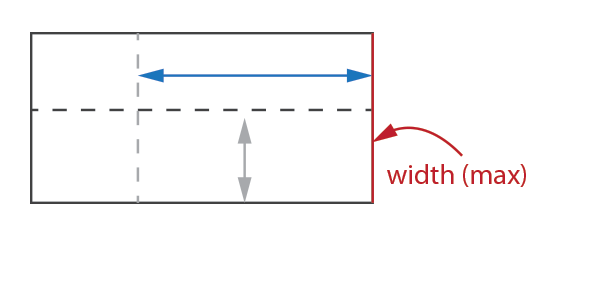
Overrides the maximum horizontal limit of an enclosed element (subject).
Expression
hmax_size(width, subject)
Notation
width |
float |
subject |
Instance of Element
|
Semantics
- The maximum horizontal limit of
subjectwill be set to the specifiedwidthconstrained by the natural maximum horizontal limit of thesubject. - The natural maximum horizontal limit of the element will not be violated.
- Returns instance of
Proxy.
vmax_size
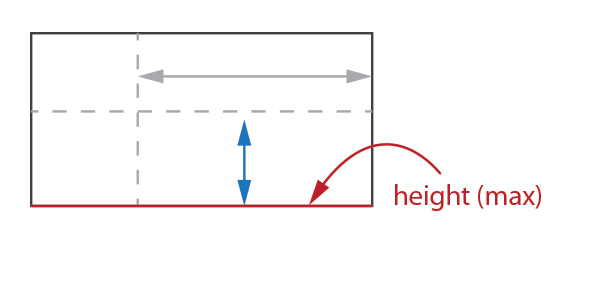
Overrides the maximum vertical limit of an enclosed element (subject).
Expression
vmax_size(height, subject)
Notation
height |
float |
subject |
Instance of Element
|
Semantics
- The maximum vertical limit of
subjectwill be set to the specifiedheightconstrained by the natural maximum vertical limit of thesubject - The natural maximum vertical limit of the element will not be violated.
- Returns instance of
Proxy.
Stretch Elements
Resizable elements are elements with minimum limits that are less than the
maximum limits in either x or y dimensions or both. Resizable elements can
therefore stretch if there is extra available space allocated to it beyond
its minimum limit. When two or more resizable elements are placed side by
side in an htile or vtile, the element’s “stretchiness”
determines how much extra space is given to it. The element’s “stretchiness”
is determined by the element’s stretch member function:
virtual view_stretch stretch() const;
where view_stretch is a struct declared as:
struct view_stretch
{
float x = 1.0;
float y = 1.0;
};
The view_stretch x and y members determine how much an element can
stretch in the x or y dimensions. The default is 1.0. A stretchiness value of
2.0 means that the element is able to stretch twice as much compared to its
siblings in an htile or vtile, assuming they have the
default 1.0 stretchiness.
hstretch
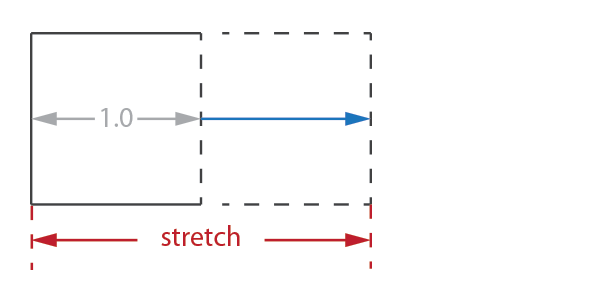
Overrides the horizontal stretchiness of an an enclosed element (subject).
Expression
hstretch(stretch, subject)
Notation
stretch |
A scalar value |
subject |
Instance of Element
|
Semantics
- The
subjectwill assume the givenstretchvalue. - The stretch value has no effect to elements with fixed horizontal size.
- Returns instance of
Proxy.
For example, the image below shows how three elements are laid out in an
htile, with stretch values of 1.0, 1.0 and 2.0, respectively:
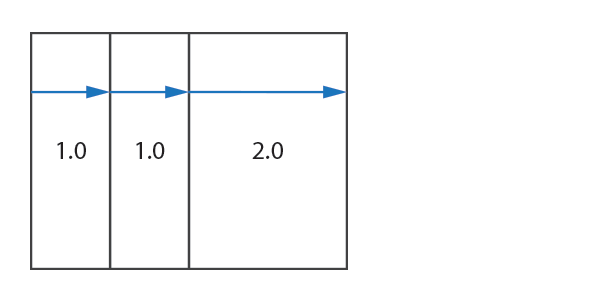
The element with the 2.0 stretch value stretches twice as much compared to
its siblings.
vstretch

Overrides the vertical stretchiness of an an enclosed element (subject).
Expression
vstretch(stretch, subject)
Notation
stretch |
A scalar value |
subject |
Instance of Element
|
Semantics
- The
subjectwill assume the givenstretchvalue. - The stretch value has no effect to elements with fixed vertical limits.
- Returns instance of
Proxy.
For example, the image below shows how three elements are laid out in an
htile, with stretch values of 0.5, 1.0 and 1.5, respectively:
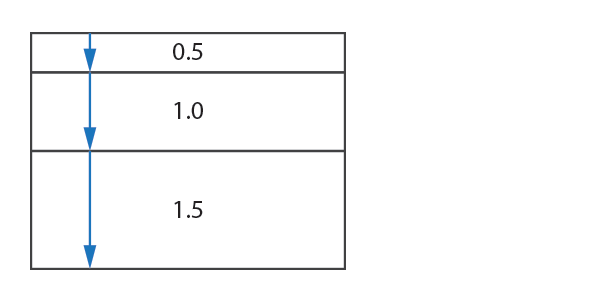
The element with the 0.5 stretch value stretches half less, while the
element with the 1.5 stretches half more than the default.
Scale Element
The Elements Library is resolution independent and elements can be scaled up or down to suit. The default scale is 1.0 (no scale).
scale
The scale element changes the scale of its enclosed element (subject).
Expression
scale(scale_, subject)
Notation
scale_ |
float |
subject |
Instance of Element
|
Semantics
- The
subjectwill scaled given thescale_value. A value > 1.0 scales the element up (zoom in), while a value < 1.0 scales down (zoom out). - Returns instance of
Proxy.
Align Elements
An element can be aligned arbitrarily from 0.0 to 1.0 in either the x or y dimensions, or both. There is a comprehensive list of align elements in The Elements Library that can be used for various purposes. This section catalogues all the available align elements.
halign

Aligns the an enclosed element (subject) in the x-axis.
Expression
halign(align, subject)
Notation
align |
float |
subject |
Instance of Element
|
Semantics
- Given a total allocated space
X,subjectwill be positioned horizontally toX * align. - The
subjectwill assume its minimum horizontal limit. - Returns instance of
Proxy.
Examples
halign(0.0) // align subject to the lefthalign(1.0) // align subject to the righthalign(0.5) // align subject to the center
align_left

Left-aligns the an enclosed element (subject).
Expression
align_left(subject)
Notation
subject |
Instance of Element
|
Semantics
- Equivalent to
halign(0.0, subject) - Returns instance of
Proxy.
align_center
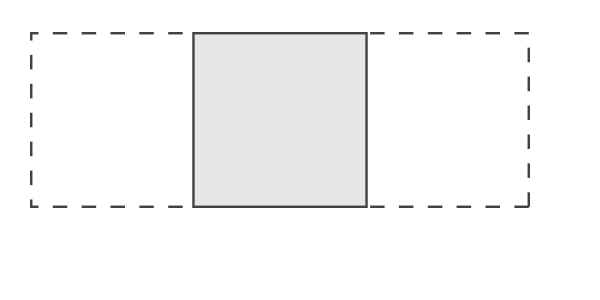
Center-aligns the an enclosed element (subject).
Expression
align_center(subject)
Notation
subject |
Instance of Element
|
Semantics
- Equivalent to
halign(0.5, subject) - Returns instance of
Proxy.
align_right
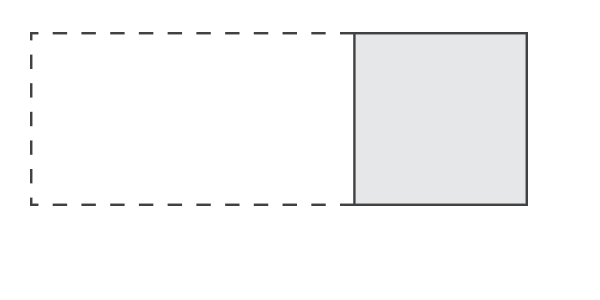
Right-aligns the an enclosed element (subject).
Expression
align_right(subject)
Notation
subject |
Instance of Element
|
Semantics
- Equivalent to
halign(1.0, subject) - Returns instance of
Proxy.
valign
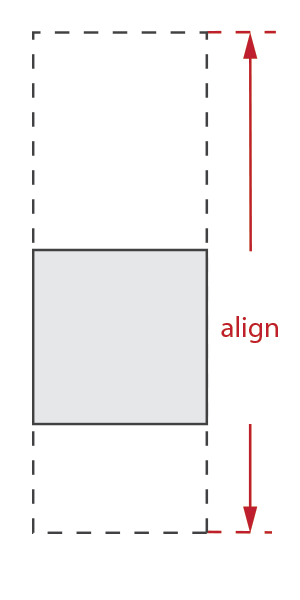
Aligns the an enclosed element (subject) in the y-axis.
Expression
valign(align, subject)
Notation
align |
float |
subject |
Instance of Element
|
Semantics
- Given a total allocated space
Y,subjectwill be positioned vertically toY * align. - The
subjectwill assume its minimum vertical limit. - Returns instance of
Proxy.
Examples
valign(0.0) // align subject to the topvalign(1.0) // align subject to the rightvalign(0.5) // align subject to the middle
align_top
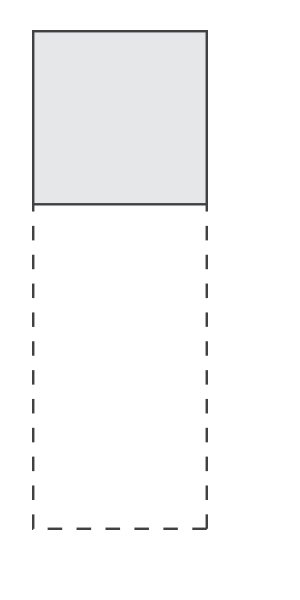
Aligns the an enclosed element (subject) to the top.
Expression
align_top(subject)
Notation
subject |
Instance of Element
|
Semantics
- Equivalent to
valign(0.0, subject) - Returns instance of
Proxy.
align_middle
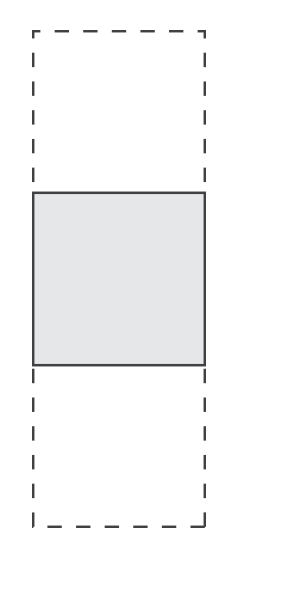
Aligns the an enclosed element (subject) to the middle.
Expression
align_middle(subject)
Notation
subject |
Instance of Element
|
Semantics
- Equivalent to
valign(0.5, subject) - Returns instance of
Proxy.
align_bottom
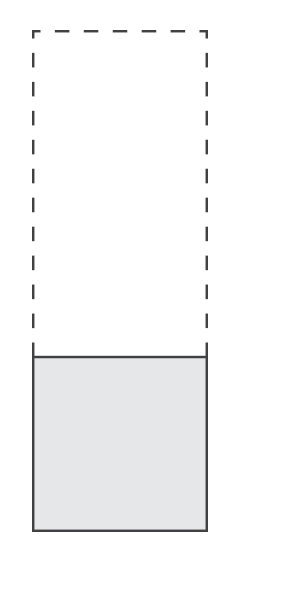
Aligns the an enclosed element (subject) to the bottom.
Expression
align_bottom(subject)
Notation
subject |
Instance of Element
|
Semantics
- Equivalent to
valign(1.0, subject) - Returns instance of
Proxy.
align_left_top
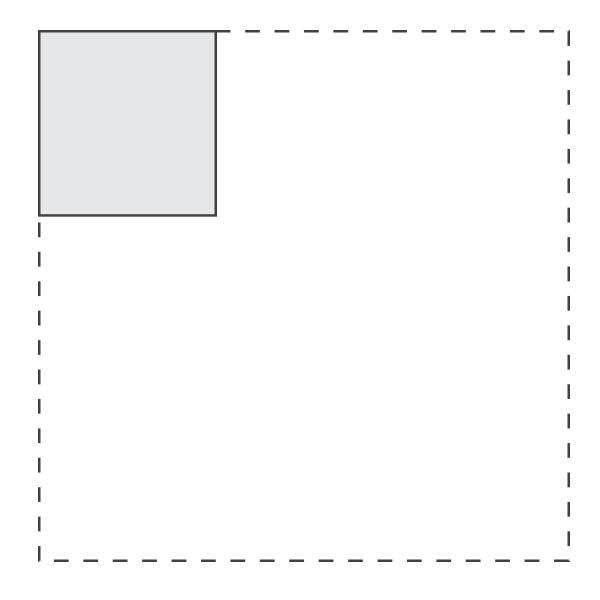
Aligns the an enclosed element (subject) to the left-top.
Expression
align_left_top(subject)
Notation
subject |
Instance of Element
|
Semantics
- Equivalent to
align_left(align_top(subject)) - Returns instance of
Proxy.
align_center_top
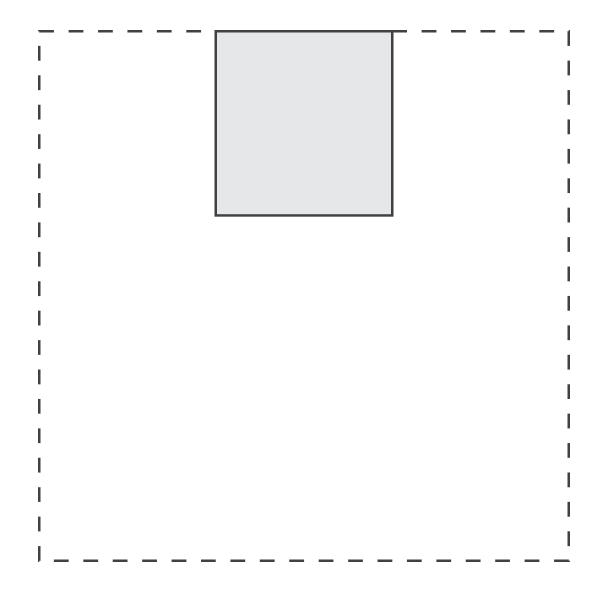
Aligns the an enclosed element (subject) to the center-top.
Expression
align_center_top(subject)
Notation
subject |
Instance of Element
|
Semantics
- Equivalent to
align_center(align_top(subject)) - Returns instance of
Proxy.
align_right_top

Aligns the an enclosed element (subject) to the right-top.
Expression
align_right_top(subject)
Notation
subject |
Instance of Element
|
Semantics
- Equivalent to
align_right(align_top(subject)) - Returns instance of
Proxy.
align_left_middle

Aligns the an enclosed element (subject) to the left-middle.
Expression
align_left_middle(subject)
Notation
subject |
Instance of Element
|
Semantics
- Equivalent to
align_left(align_middle(subject)) - Returns instance of
Proxy.
align_center_middle
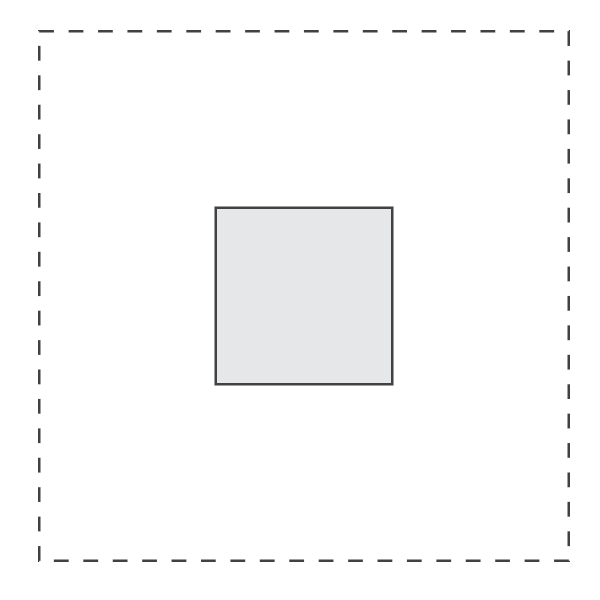
Aligns the an enclosed element (subject) to the center-middle.
Expression
align_center_middle(subject)
Notation
subject |
Instance of Element
|
Semantics
- Equivalent to
align_center(align_middle(subject)) - Returns instance of
Proxy.
align_right_middle
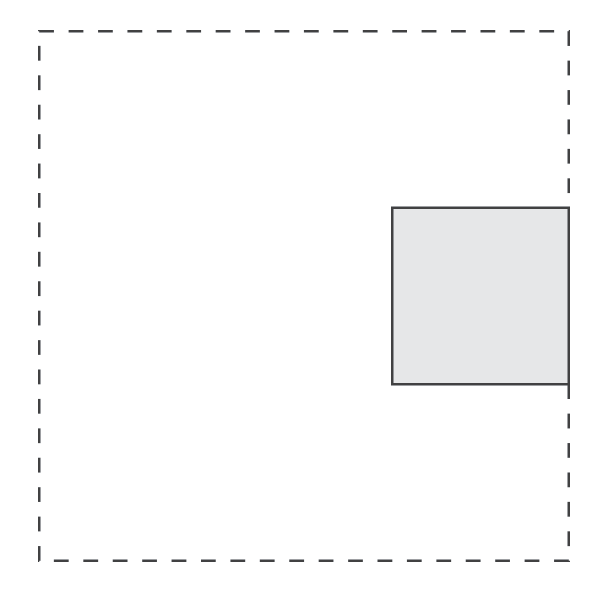
Aligns the an enclosed element (subject) to the right-middle.
Expression
align_right_middle(subject)
Notation
subject |
Instance of Element
|
Semantics
- Equivalent to
align_right(align_middle(subject)) - Returns instance of
Proxy.
align_left_bottom

Aligns the an enclosed element (subject) to the left-bottom.
Expression
align_left_bottom(subject)
Notation
| subject | Instance of Element
|
Semantics
- Equivalent to
align_left(align_bottom(subject)) - Returns instance of
Proxy.
align_center_bottom
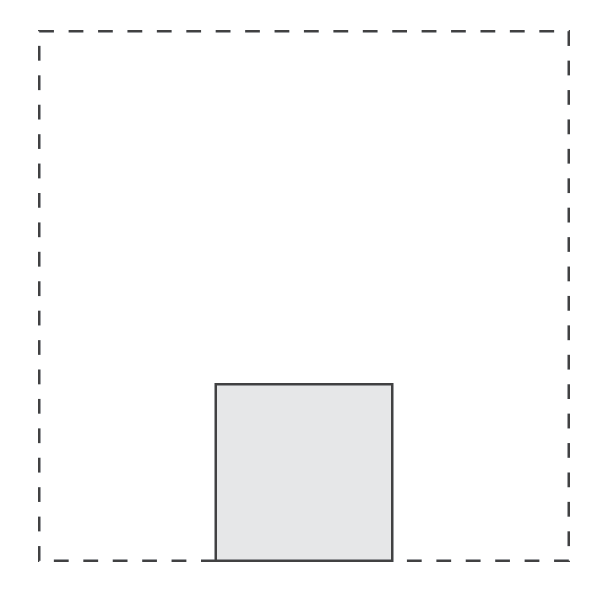
Aligns the an enclosed element (subject) to the center-bottom.
Expression
align_center_bottom(subject)
Notation
subject |
Instance of Element
|
Semantics
- Equivalent to
align_center(align_bottom(subject)) - Returns instance of
Proxy.
align_right_bottom
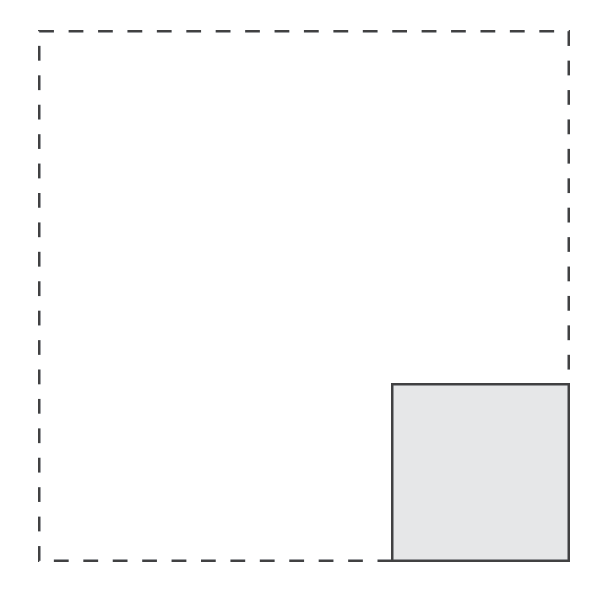
Aligns the an enclosed element (subject) to the right-bottom.
Expression
align_right_bottom(subject)
Notation
subject |
Instance of Element
|
Semantics
- Equivalent to
align_right(align_bottom(subject)) - Returns instance of
Proxy.
Margin Elements
Margins add some space around elements. There is a comprehensive list of margin elements in the Elements Library that can be used for various purposes. This section catalogues all the available margin elements.
margin
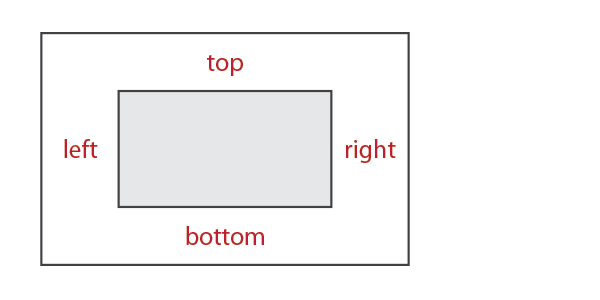
Adds a margin all around an enclosed element (subject).
Expression
margin({ left, top, right, bottom }, subject)
Notation
left, top, right, bottom
|
float |
subject |
Instance of Element
|
Semantics
- Space is added to the left, top, right, and bottom of the subject with the given parameters.
- The element’s limits is overridden to account for the additional space.
- The
margindoes not violate the natural limits of the subject.marginwill respect the subject’s min-max constraints and resizability. - Returns instance of
Proxy.
left_margin
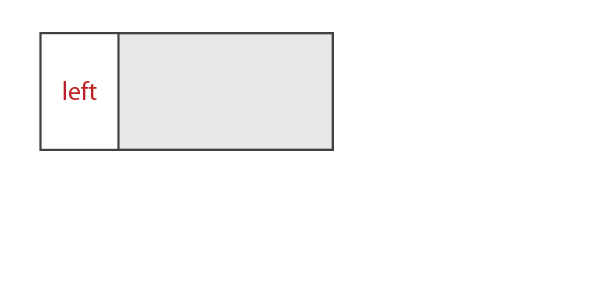
Adds a margin to the left of an enclosed element (subject).
Expression
left_margin(left, subject)
Notation
left |
float |
subject |
Instance of Element
|
Semantics
- Space is added to the left of the subject with the given parameter.
- The element’s limits is overridden to account for the additional space.
- The
left_margindoes not violate the natural limits of the subject.left_marginwill respect the subject’s min-max constraints and resizability. - Returns instance of
Proxy.
right_margin
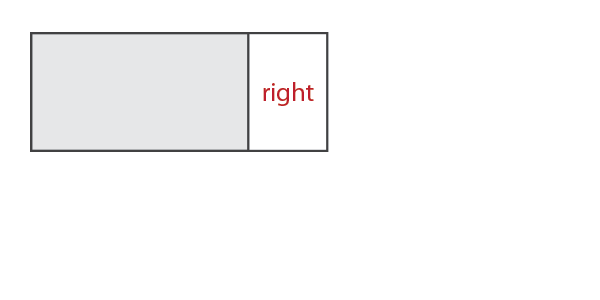
Adds a margin to the right of an enclosed element (subject).
Expression
right_margin(right, subject)
Notation
right |
float |
subject |
Instance of Element
|
Semantics
- Space is added to the right of the subject with the given parameter.
- The element’s limits is overridden to account for the additional space.
- The
right_margindoes not violate the natural limits of the subject.right_marginwill respect the subject’s min-max constraints and resizability. - Returns instance of
Proxy.
top_margin

Adds a margin to the top of an enclosed element (subject).
Expression
top_margin(top, subject)
Notation
top |
float |
subject |
Instance of Element
|
Semantics
- Space is added to the top of the subject with the given parameter.
- The element’s limits is overridden to account for the additional space.
- The
top_margindoes not violate the natural limits of the subject.top_marginwill respect the subject’s min-max constraints and resizability. - Returns instance of
Proxy.
bottom_margin

Adds a margin to the bottom of an enclosed element (subject).
Expression
bottom_margin(bottom, subject)
Notation
bottom |
float |
subject |
Instance of Element
|
Semantics
- Space is added to the to the bottom of the subject with the given parameter.
- The element’s limits is overridden to account for the additional space.
- The
bottom_margindoes not violate the natural limits of the subject.bottom_marginwill respect the subject’s min-max constraints and resizability. - Returns instance of
Proxy.
hmargin
(same as left_right_margin)
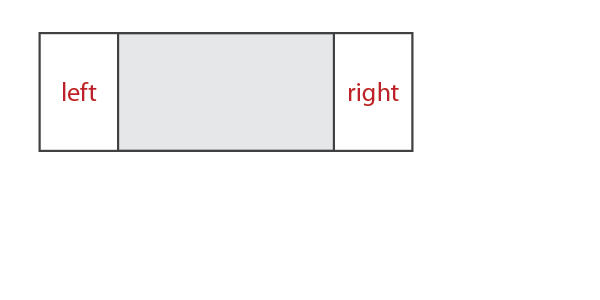
Adds a margin to the left and right sides of an enclosed element (subject).
Expressions
// variant 1
hmargin({ left, right }, subject)
// variant 2
hmargin(left, right, subject)
// variant 3
left_right_margin({ left, right }, subject)
// variant 4
left_right_margin(left, right, subject)
Notation
left, right
|
float |
subject |
Instance of Element
|
Semantics
- Space is added to the to the left and right sides of the subject with the given parameters.
- The element’s limits is overridden to account for the additional space.
- The
hmargin(and variants) does not violate the natural limits of the subject.hmargin(and variants) will respect the subject’s min-max constraints and resizability. - Returns instance of
Proxy.
vmargin
(same as top_bottom_margin)

Adds a margin to the top and bottom sides of an enclosed element (subject).
Expressions
// variant 1
vmargin({ top, bottom }, subject)
// variant 2
vmargin(top, bottom, subject)
// variant 3
top_bottom_margin({ top, bottom }, subject)
// variant 4
top_bottom_margin(top, bottom, subject)
Notation
top, bottom
|
float |
subject |
Instance of Element
|
Semantics
- Space is added to the to the top and bottom sides of the subject with the given parameters.
- The element’s limits is overridden to account for the additional space.
- The
vmargin(and variants) does not violate the natural limits of the subject.vmargin(and variants) will respect the subject’s min-max constraints and resizability. - Returns instance of
Proxy.
left_top_margin

Adds a margin to the left and top sides of an enclosed element (subject).
Expressions
// variant 1
left_top_margin({ left, top }, subject)
// variant 2
left_top_margin(left, top, subject)
Notation
left, top
|
float |
subject |
Instance of Element
|
Semantics
- Space is added to the to the left and top sides of the subject with the given parameters.
- The element’s limits is overridden to account for the additional space.
- The
left_top_margin(and variant) does not violate the natural limits of the subject.left_top_margin(and variant) will respect the subject’s min-max constraints and resizability. - Returns instance of
Proxy.
left_bottom_margin

Adds a margin to the left and bottom sides of an enclosed element (subject).
Expressions
// variant 1
left_bottom_margin({ left, bottom }, subject)
// variant 2
left_bottom_margin(left, bottom, subject)
Notation
left, bottom
|
float |
subject |
Instance of Element
|
Semantics
- Space is added to the to the left and bottom sides of the subject with the given parameters.
- The element’s limits is overridden to account for the additional space.
- The
left_bottom_margin(and variant) does not violate the natural limits of the subject.left_bottom_margin(and variant) will respect the subject’s min-max constraints and resizability. - Returns instance of
Proxy.
right_top_margin

Adds a margin to the right and top sides of an enclosed element (subject).
Expressions
// variant 1
right_top_margin({ right, top }, subject)
// variant 2
right_top_margin(right, top, subject)
Notation
right, top
|
float |
subject |
Instance of Element
|
Semantics
- Space is added to the to the right and top sides of the subject with the given parameters.
- The element’s limits is overridden to account for the additional space.
- The
right_top_margin(and variant) does not violate the natural limits of the subject.right_top_margin(and variant) will respect the subject’s min-max constraints and resizability. - Returns instance of
Proxy.
right_bottom_margin

Adds a margin to the right and bottom sides of an enclosed element (subject).
Expressions
// variant 1
right_bottom_margin({ right, bottom }, subject)
// variant 2
right_bottom_margin(right, bottom, subject)
Notation
right, bottom
|
float |
subject |
Instance of Element
|
Semantics
- Space is added to the to the right and bottom sides of the subject with the given parameters.
- The element’s limits is overridden to account for the additional space.
- The
right_bottom_margin(and variant) does not violate the natural limits of the subject.right_bottom_margin(and variant) will respect the subject’s min-max constraints and resizability. - Returns instance of
Proxy.
Floating Element
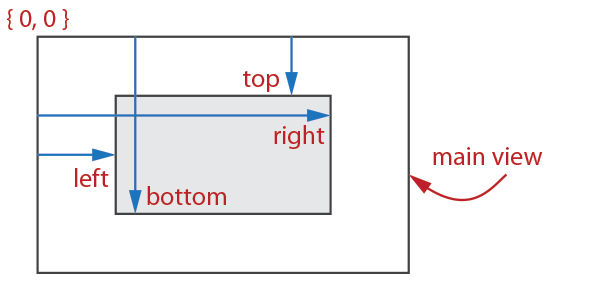
A floating element allows arbitrary placement of an enclosed element
(subject) in the main view.
Expression
floating({ left, top, right, bottom }, subject)
Notation
left, top, right, bottom
|
float |
subject |
Instance of Element
|
Semantics
- The element will be placed exactly to the specified position in the main view, constrained to the subject’s natural limits.
- The floating element does not violate the natural limits of the subject.
- Returns instance of
Proxy.
Tiles and Grids
Tiles are the most useful layout elements, followed by by Grids. Tiles are
used everywhere for composing hierarchical elements in rows and columns,
typical to all GUIs. Grids are similar to tiles. Both tiles and grids allow
elements to fluidly adjust depending on available space. Tiles compute the
layout of its elements using the children elements’ size limits while grids
lay out its elements using an externally supplied fractional coordinates that
specify positions of the elements in the allocated space.
Tiles are best used for composing UI elements while grids are best for composing tables.
Horizontal Grids
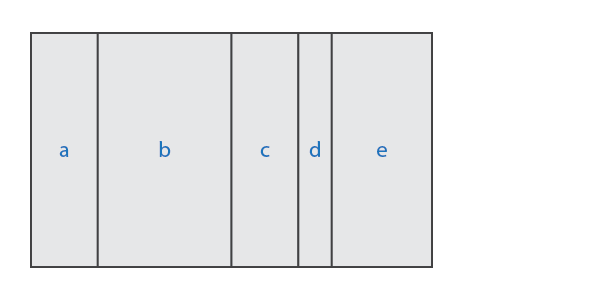
Horizontal Grids are composites that lay out one or more child elements in a
row following externally supplied horizontal fractional positions. Horizontal
Grids have computed horizontal and vertical sizes following the natural
limits of its children.
Semantics
- The elements are laid out in a single row, left to right, immediately next to each other with no intervening space.
- The elements are positioned horizontally using the supplied fractional positions. The fractional positions values range from 0.0 to 1.0, which specify the child element’s horizontal position from left (0.0) to right (1.0).
- The grid’s minimum vertical limit is computed as the maximum of the children elements’ minimum vertical limits.
- The grid’s maximum vertical limit is computed as the minimum of the children elements’ maximum vertical limits.
- The final computed minimum limit is clamped to ensure it is not greater than the computed maximum limit. Likewise the computed maximum limit is clamped to ensure it is not less than the computed minimum limit.
- The supplied (horizontal) positions and computed (vertical) coordinates
may violate the limits of its children elements.
- If the allocated size of a child element is lower than the element’s minimum limits in either dimension, the element will be cropped.
- If a child element’s maximum limits in either dimension is exceeded, the element will be aligned to the top-left.
hgrid
Build a horizontal grid with a fixed number of elements.
Expression
hgrid(positions, e1,...eN)
Notation
N |
The number of items |
e1,...eN |
One or more child elements, instances of Element (more below) |
positions |
External container of fractional positions (more below) |
The external container, positions, can either be a plain array of type
float[N] or std::array<float, N>. Elements e1,...eN are held in a
std::array<element_ptr, N> managed by the horizontal grid element.
Example
static float positions[] = { 0.25, 0.5, 0.75, 1.0 };
//...
hgrid(positions, item1, item2, item3, item4)
If the number of elements is not fixed, you can use an
hgrid_composite(see below).
Requirements
- The number of supplied positions and elements should match, otherwise,
compiler error (no matching function for call to
hgrid). - The positions assume the first element is at
x=0(it is at the left-most position in the row). The fractional position of the second element is at index0, the third at index1, and so on. - The externally supplied positions should be sorted with increasing values such that positions[n] <= positions[n+1]. The behavior is undefined if this is violated.
Semantics
- In addition to the semantics of Horizontal Grids, returns instance of
Composite.
hgrid_composite
Create a horizontal grid with an indeterminate (dynamic) number of elements.
Expression
hgrid_composite c{ positions };
Notation
positions |
External container of fractional positions, std::vector<float>
|
c |
Instance of type hgrid_composite
|
The hgrid_composite is basically a std::vector<element_ptr> that the
client uses to manage the composite’s elements. The lifetime of the
container, c, is the client’s responsibility. You use hgrid_composite
just as you would a std::vector, such as push_back a child element. Just
keep in mind that we are dealing with element_ptr items.
Example
c.push_back(share(child));

shareturns an element object into anelement_ptrheld by thestd::vector<element_ptr>inhgrid_composite.
hgrid_composite is itself also an element and while it has std::vector’s
interface, it can also be shared like any element, which allows you to
build complex hierarchical structures.
Requirements
- The number of items in the external coordinates vector
positionsmust match with the number of elements at any given time. - The positions assume the first element is at
x=0(it is at the left-most position in the row). The fractional position of the second element is at index0, the third at index1, and so on. - The externally supplied positions should be sorted with increasing values such that positions[n] <= positions[n+1]. The behavior is undefined if this is violated.
Horizontal Tiles
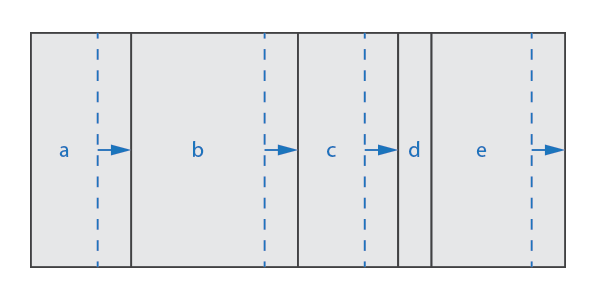
Horizontal Tiles are similar to Horizontal Grids, but allow elements to fluidly adjust horizontally depending on available space. Horizontal Tiles are best used for composing UI elements while Horizontal Grids are best for composing tables.
Semantics
- The elements are laid out in a single row, left to right, immediately next to each other with no intervening space.
- The elements are positioned horizontally using the children’s natural limits.
- Horizontal space is allocated using this algorithm:
- Space is allocated for each child element following the child’s natural minimum horizontal limit.
- If the allocated space exceeds the sum of all children elements’
minimum horizontal limits, the extra space is given to each
horizontally resizable element (
limits.min.x < limits.max.x). - The element’s “stretchiness” determines how much extra space is given
to it according to the element’s
stretch()member function. A stretch value of1.0is default. A stretchiness value of 2.0 means that the element is able to stretch twice as much compared to its siblings. Horizontally fixed-sized elements will not be stretched (element d in the diagram). (Also see Stretch Elements).
- The tile’s minimum vertical limit is computed as the maximum of the children elements’ minimum vertical limits.
- The grid’s maximum vertical limit is computed as the minimum of the children elements’ maximum vertical limits.
- The final computed minimum limit is clamped to ensure it is not greater than the computed maximum limit. Likewise the computed maximum limit is clamped to ensure it is not less than the computed minimum limit.
- The supplied (horizontal) and computed (vertical) coordinates may violate
the limits of its children elements.
- If the allocated size of a child element is lower than the element’s minimum limits in either dimension, the element will be cropped.
- If a child element’s maximum limits in either dimension is exceeded, the element will be aligned to the top-left.
htile
Build a horizontal tile with a fixed number of elements.
Expression
htile(e1,...eN)
Notation
N |
The number of items |
e1,...eN |
One or more child elements, instances of Element (more below) |
Elements e1,...eN are held in a std::array<element_ptr, N> managed by the
horizontal tile element.
Example:
htile(item1, item2, item3, item4)
If the number of elements is not fixed, you can use an
htile_composite(see below).
Semantics
- In addition to the semantics of Horizontal Tiles, returns instance of
Composite.
htile_composite
Create a horizontal tile with an indeterminate (dynamic) number of elements.
Expression
htile_composite c;
Notation
c |
Instance of type htile_composite
|
The htile_composite is basically a std::vector<element_ptr> that the
client uses to manage the composite’s elements. The lifetime of the
container, c, is the client’s responsibility. You use htile_composite
just as you would a std::vector, such as push_back a child element. Just
keep in mind that we are dealing with element_ptr items.
Example
c.push_back(share(child));

shareturns an element object into anelement_ptrheld by thestd::vector<element_ptr>inhtile_composite.
htile_composite is itself also an element and while it has std::vector’s
interface, it can also be shared like any element, which allows you to
build complex hierarchical structures.
Vertical Grids

Vertical Grids are composites that lay out one or more child elements in a
column following externally supplied vertical fractional positions. Vertical
Grids have computed horizontal and vertical sizes following the natural
limits of its children.
Semantics
- The elements are laid out in a single column, top to bottom, immediately next to each other with no intervening space.
- The elements are positioned vertically using the supplied fractional positions. The fractional positions values range from 0.0 to 1.0, which specify the child element’s vertical position from top (0.0) to bottom (1.0).
- The grid’s minimum horizontal limit is computed as the maximum of the children elements’ minimum horizontal limits.
- The grid’s maximum horizontal limit is computed as the minumum of the children elements’ maximum horizontal limits.
- The final computed minimum limit is clamped to ensure it is not greater than the computed maximum limit. Likewise the computed maximum limit is clamped to ensure it is not less than the computed minimum limit.
- The supplied (vertical) positions and computed (horizontal) coordinates
may violate the limits of its children elements.
- If the allocated size of a child element is lower than the element’s minimum limits in either dimension, the element will be cropped.
- If a child element’s maximum limits in either dimension is exceeded, the element will be aligned to the top-left.
vgrid
Build a vertical grid with a fixed number of elements.
Expression
vgrid(positions, e1,...eN)
Notation
N |
The number of items |
e1,...eN |
One or more child elements, instances of Element (more below) |
positions |
External container of fractional positions (more below) |
The External container, positions is an external can either be a plain array
of type float[N] or std::array<float, N>. Elements e1,...eN are held in
a std::array<element_ptr, N> managed by the vertical grid element.
Example
static float positions[] = { 0.25, 0.5, 0.75, 1.0 };
//...
vgrid(positions, item1, item2, item3, item4)
If the number of elements is not fixed, you can use an
vgrid_composite(see below).
Requirements
- The number of supplied coordinates and elements should match, otherwise,
compiler error (no matching function for call to
vgrid). - The positions assume the first element is at
x=0(it is at the top-most position in the column). The fractional position of the second element is at index0, the third at index1, and so on. - The externally supplied positions should be sorted with increasing values such that positions[n] <= positions[n+1]. The behavior is undefined if this is violated.
Semantics
- In addition to the semantics of Vertical Grids, returns instance of
Composite.
vgrid_composite
Create a vertical grid with an indeterminate (dynamic) number of elements.
Expression
vgrid_composite c{ positions };
Notation
positions |
External container of fractional positions, std::vector<float>
|
c |
Instance of type vgrid_composite
|
The vgrid_composite is basically a std::vector<element_ptr> that the
client uses to manage the composite’s elements. The lifetime of the
container, c, is the client’s responsibility. You use vgrid_composite
just as you would a std::vector, such as push_back a child element. Just
keep in mind that we are dealing with element_ptr items. Example:
c.push_back(share(child));

shareturns an element object into anelement_ptrheld by thestd::vector<element_ptr>invgrid_composite.
vgrid_composite is itself also an element and while it has std::vector’s
interface, it can also be shared like any element, which allows you to
build complex hierarchical structures.
Requirements
- The number of items in the external coordinates vector
positionsmust match with the number of elements at any given time. - The positions assume the first element is at
x=0(it is at the top-most position in the column). The fractional position of the second element is at index0, the third at index1, and so on. - The externally supplied positions should be sorted with increasing values such that positions[n] <= positions[n+1]. The behavior is undefined if this is violated.
Vertical Tiles
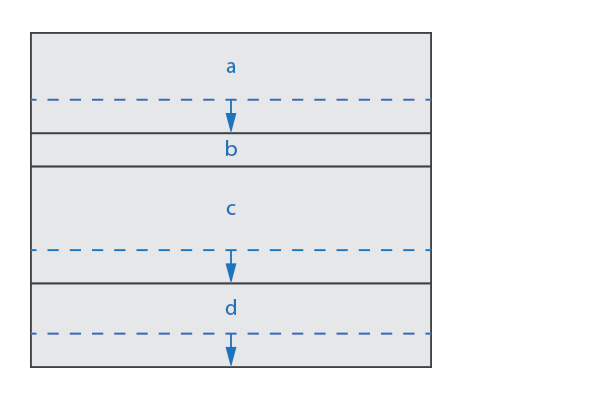
Vertical Tiles are similar to Vertical Grids, but allow elements to fluidly adjust vertically depending on available space. Vertical Tiles are best used for composing UI elements while Vertical Grids are best for composing tables.
Semantics
- The elements are laid out in a single column, left to right, immediately next to each other with no intervening space.
- The elements are positioned vertically using the children’s natural limits.
- Vertical space is allocated using this algorithm:
- Space is allocated for each child element following the child’s natural minimum vertical limit.
- If the allocated space exceeds the sum of all children elements’
minimum vertical limits, the extra space is given to each
vertically resizable element (
limits.min.y < limits.max.y). - The element’s “stretchiness” determines how much extra space is given
to it according to the element’s
stretch()member function. A stretch value of1.0is default. A stretchiness value of 2.0 means that the element is able to stretch twice as much compared to its siblings. Vertically fixed-sized elements will not be stretched (element b in the diagram). (Also see Stretch Elements).
- The tile’s minimum horizontal limit is computed as the maximum of the children elements’ minimum horizontal limits.
- The grid’s maximum horizontal limit is computed as the minumum of the children elements’ maximum horizontal limits.
- The final computed minimum limit is clamped to ensure it is not greater than the computed maximum limit. Likewise the computed maximum limit is clamped to ensure it is not less than the computed minimum limit.
- The supplied (vertical) and computed (horizontal) coordinates may violate
the limits of its children elements.
- If the allocated size of a child element is lower than the element’s minimum limits in either dimension, the element will be cropped.
- If a child element’s maximum limits in either dimension is exceeded, the element will be aligned to the top-left.
vtile
Build a vertical tile with a fixed number of elements.
Expression
vtile(e1,...eN)
Notation
N |
The number of items |
e1,...eN |
One or more child elements, instances of Element (more below) |
Elements e1,...eN are held in a std::array<element_ptr, N> managed by the
vertical tile element.
Example
vtile(item1, item2, item3, item4)
If the number of elements is not fixed, you can use an
vtile_composite(see below).
Semantics
- In addition to the semantics of Vertical Tiles, returns instance of
Composite.
vtile_composite
Create a vertical tile with an indeterminate (dynamic) number of elements:
Expression
vtile_composite c;
Notation
c |
Instance of type vtile_composite
|
The vtile_composite is basically a std::vector<element_ptr> that the
client uses to manage the composite’s elements. The lifetime of the
container, c, is the client’s responsibility. You use vtile_composite
just as you would a std::vector, such as push_back a child element. Just
keep in mind that we are dealing with element_ptr items.
Example
c.push_back(share(child));

shareturns an element object into anelement_ptrheld by thestd::vector<element_ptr>invtile_composite.
vtile_composite is itself also an element and while it has
std::vector’s interface, it can also be shared like any element, which
allows you to build complex hierarchical structures.
Layers
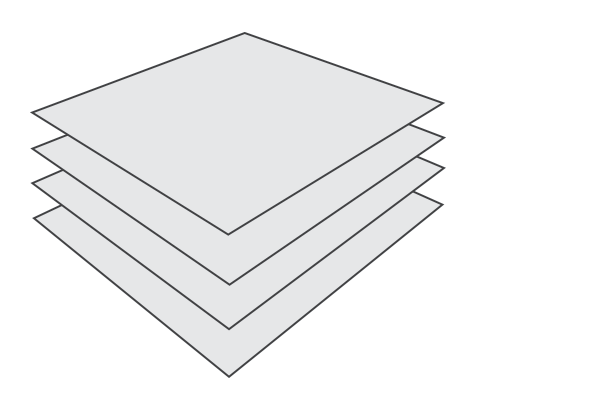
The Elements Library is 2D, but the z-axis pertains to top-to-bottom layering. Layers allow groups of elements to be placed in the z-axis where higher-level elements obscure or hide lower-level elements.
Semantics
- The elements are laid out in the z-axis, top to bottom.
- Rendering is done bottom-up; the bottom-most elements are drawn first.
- UI control (such as mouse clicks) proceeds from top to bottom. Higher-level elements are given control priority. If a higher-level element does not process the event, lower-level elements are given a chance.
- The layer’s minimum limit is computed as the maximum of the children elements’ minimum limits.
- The layer’s maximum limit is computed as the minimum of the children elements’ maximum limits.
- The final computed minimum limit is clamped to ensure it is not greater than the computed maximum limit. Likewise the computed maximum limit is clamped to ensure it is not less than the computed minimum limit.
- The computed (vertical) and (horizontal) coordinates may violate the
limits of its children elements.
- If the allocated size of a child element is lower than the element’s minimum limits in either dimension, the element will be cropped.
- If a child element’s maximum limits in either dimension is exceeded, the element will be aligned to the top-left.
layer
Create a layer composite with a fixed number of elements.
Expression
layer(e1,...eN)
Notation
N |
The number of items |
e1,...eN |
One or more child elements, instances of Element (more below) |
Elements e1,...eN are held in a std::array<element_ptr, N> managed by the
layer element.
Example
layer(item1, item2, item3, item4)
If the number of elements is not fixed, you can use an
layer_composite(see below).
Semantics
- In addition to the semantics of Layers, returns instance of
Composite.
layer_composite
Create a layer with an indeterminate (dynamic) number of elements:
layer_composite c;
Notation
c |
Instance of type layer_composite
|
The layer_composite is basically a std::vector<element_ptr> that the
client uses to manage the composite’s elements. The lifetime of the
container, c, is the client’s responsibility. You use layer_composite
just as you would a std::vector, such as push_back a child element. Just
keep in mind that we are dealing with element_ptr items.
Example
c.push_back(share(child));

shareturns an element object into anelement_ptrheld by thestd::vector<element_ptr>inlayer_composite.
layer_composite is itself also an element and while it has
std::vector’s interface, it can also be shared like any element, which
allows you to build complex hierarchical structures.
Decks
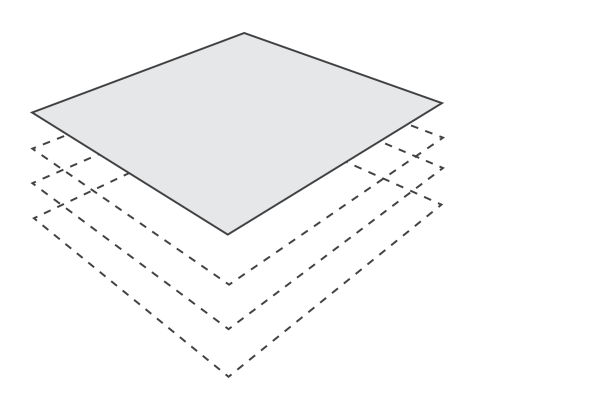
The Deck is very similar to layers. Elements are placed in the z-axis. But unlike layers, only selected element is active (top-most by default).
Semantics
- Everything listed in the layer’s Semantics, except 2 and 3.
- Only the active selected element element is drawn.
- Only the active selected element is given the chance to process UI control.
deck
Create a deck composite with a fixed number of elements.
Expression
deck(e1, e2, e3... eN)
Notation
N |
The number of items |
e1,...eN |
One or more child elements, instances of Element (more below) |
Elements e1,...eN are held in a std::array<element_ptr, N> managed by the
deck element.
Example
deck(item1, item2, item3, item4)
If the number of elements is not fixed, you can use an
deck_composite(see below).
Requirements
- In addition to the semantics of Deck, returns instance of
Composite.
deck_composite
Create a deck with an indeterminate (dynamic) number of elements:
Expression
deck_composite c;
Notation
c |
Instance of type deck_composite
|
The deck_composite is basically a std::vector<element_ptr> that the
client uses to manage the composite’s elements. The lifetime of the
container, c, is the client’s responsibility. You use deck_composite
just as you would a std::vector, such as push_back a child element. Just
keep in mind that we are dealing with element_ptr items.
Example
c.push_back(share(child));

shareturns an element object into anelement_ptrheld by thestd::vector<element_ptr>indeck_composite.
deck_composite is itself also an element and while it has std::vector’s
interface, it can also be shared like any element, which allows you to
build complex hierarchical structures.
Flow Element
The flow element, is a composite that lays out its children much like the way
text is laid out: lay out each element from left to right, fitting as much
elements as possible following each child’s maximum horizontal limit. Once
a row is full, move to the next row and do the same until the end of the row
is filled. Repeat the procedure until all the elements are laid out. The
height of each row is determined by the maximum vertical limit of all the
elements to be laid out in that row. The following graphic depicts a
simplified layout scenario for child elements a to r.

The child elements arranged in a flow composite are automatically re-flowed
(re-lay-out) when the view size changes.
To have elements laid out using flow, you need to make a flow_composite.
flow_composite
Create a flow_composite with an indeterminate (dynamic) number of elements.
Expression
flow_composite c;
Notation
c |
Instance of type flow_composite
|
The flow_composite is basically a std::vector<element_ptr> that the
client uses to manage the composite’s elements. The lifetime of the
container, c, is the client’s responsibility. You use flow_composite just
as you would a std::vector, such as push_back a child element, child.
Just keep in mind that we are dealing with element_ptr items.
Example
c.push_back(share(child));

shareturns an element object into anelement_ptrheld by thestd::vector<element_ptr>inflow_composite.
flow_composite is itself also an element and while it has std::vector’s
interface, it can also be shared like any element, which allows you to
build complex hierarchical structures.
flow
Once we have a flow_composite, we can place its contents in a flow
element.
Expression
flow(c)
Notation
c |
Instance of flow_composite
|
Semantics
- Returns instance of
Composite.
Copyright (c) 2014-2020 Joel de Guzman. All rights reserved. Distributed under the MIT License